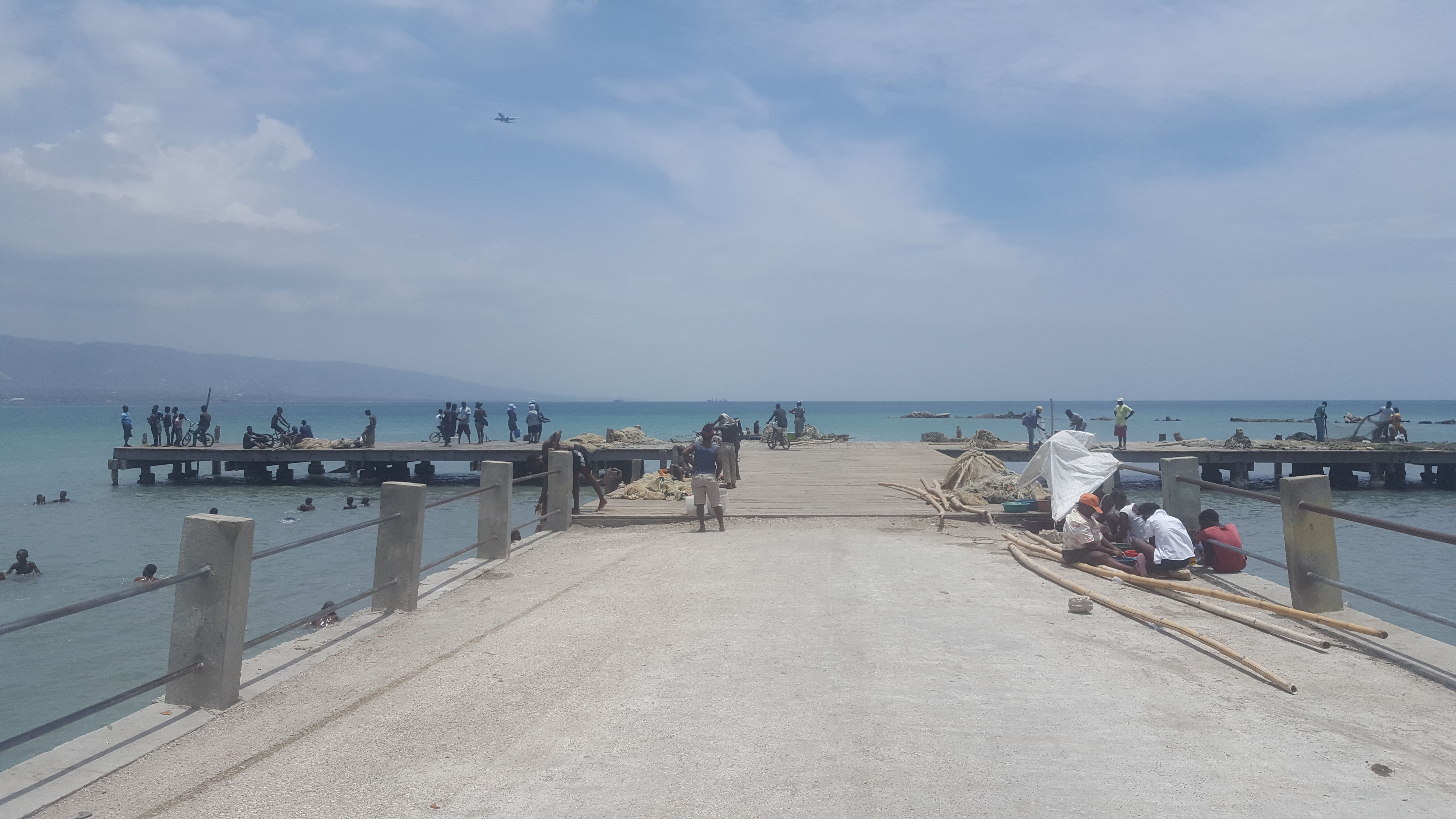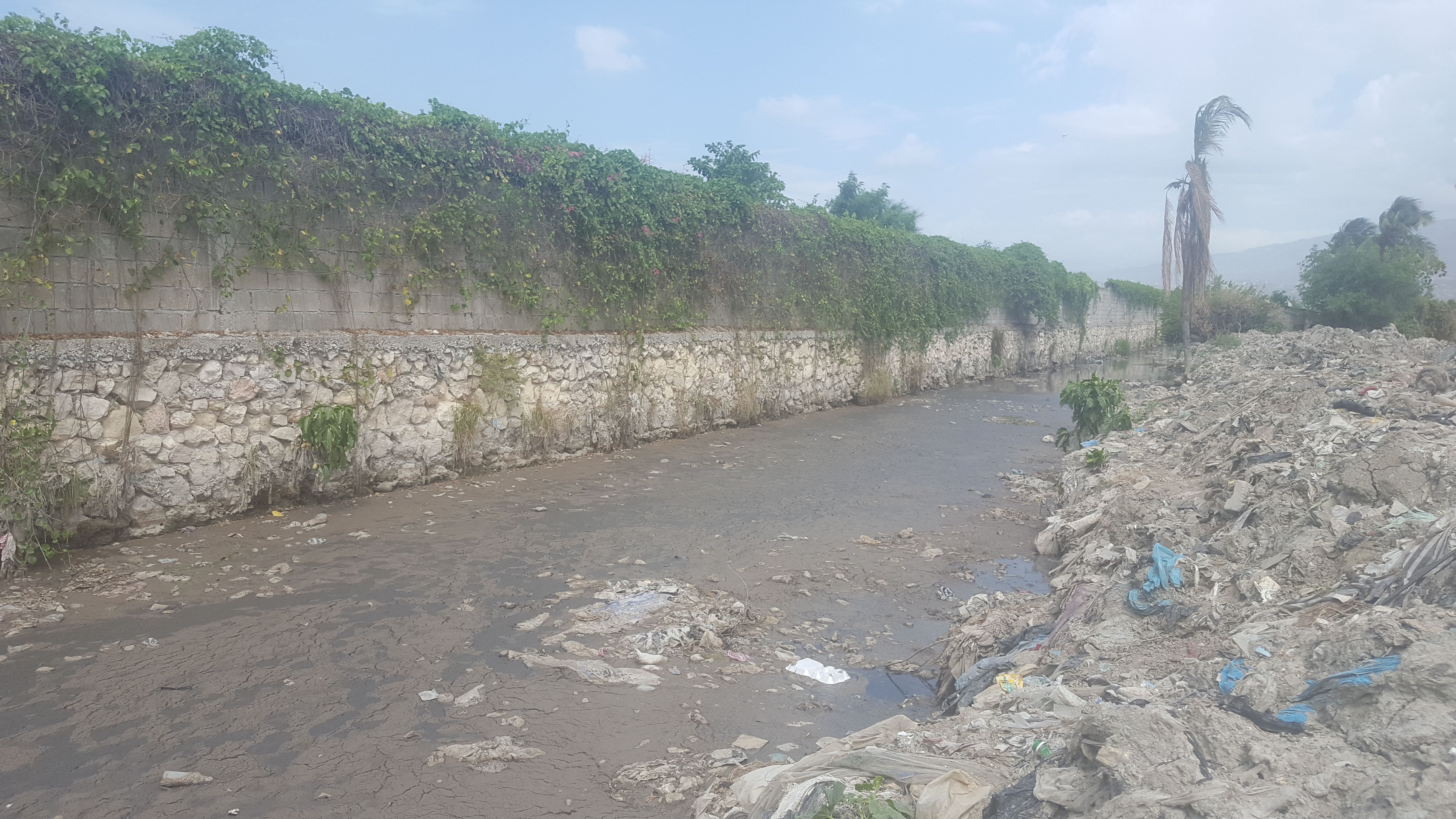It’s a hot afternoon on the Cite Soleil dock. Men are repairing fishing nets and pulling them out through the water. Women are cleaning fish, removing heads and scales. Kids are jumping into the blue-green water. Aspiring musicians and actual gangsters are riding around on Chinese-made motorbikes. One of them shows me his latest music video. It’s a nice Saturday. The sun is out, it hasn’t rained in days and there’s a concert scheduled that evening.
Cite Soleil, just a few miles from downtown Port-au-Prince, is a collection of decades-old single-story cinder block housing projects. The location is idyllic, in some ways. But when it rains, it turns into a nightmare.
The water from wealthier neighborhoods uphill and from crowded downtown areas rushes into canals that cut through the city. In many neighborhoods, including in Cite Soleil itself, people dump the contents of latrines into the canal, or relieve themselves directly into it.
As the water rises, it carries a wall of trash and excrement toward Cite Soleil housing projects on the sea. The floods have been getting worse and worse, residents say. Homes fill with three feet or more of water and sludge. After a flood around Easter this year, residents say they found four bodies in the canal. And people have gotten sick. There is still a cholera outbreak in Haiti (the disease was introduced by UN soldiers after the 2010 earthquake).
After the rain, people use buckets, shovels—whatever they can find—to clear putrid mud from the streets. And then they wait for the next rainstorm. This is the price of not having a functioning sanitation system in a city of millions.

